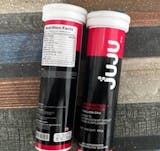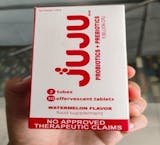High-Intensity Interval Training, or HIIT, is a popular workout style that combines short bursts of intense exercise with rest or low-intensity periods. This method is not only efficient but also offers numerous benefits, especially for those looking to lose fat. In this article, we will explore how HIIT works, the science behind it, effective workout strategies, and its overall health benefits.
How High-Intensity Interval Training Burns Fat
High-Intensity Interval Training (HIIT) is a powerful method for burning fat effectively. This type of training combines short bursts of intense activity with periods of rest or lower-intensity exercise. Here’s how it works:
Increased Caloric Expenditure
- HIIT workouts can burn more calories in a shorter time compared to traditional exercises.
- Studies show that HIIT can burn 25-30% more calories than other forms of exercise like running or biking.
- A typical HIIT session can lead to significant calorie burn even after the workout is over.
Enhanced Metabolic Rate
- After a HIIT session, your body continues to burn calories at a higher rate. This is known as the afterburn effect.
- Research indicates that HIIT can elevate your metabolism for hours post-exercise, leading to more fat loss.
- This means you can burn calories even while resting!
Fat Oxidation During Exercise
- HIIT encourages your body to use fat as a primary energy source during workouts.
- This shift in energy use can lead to greater fat loss over time.
- Studies have shown that HIIT can reduce total body fat by 1.26% in just four weeks.
HIIT is not just about burning calories during the workout; it’s about maximizing fat loss even after you finish exercising.
In summary, HIIT is an efficient way to burn fat, combining high energy output with effective recovery periods. It’s suitable for everyone, regardless of fitness level, and can be tailored to meet individual goals.
By incorporating HIIT into your routine, you can achieve significant fat loss results in a shorter amount of time than traditional workouts.
The Science Behind HIIT and Fat Loss
Excess Post-Exercise Oxygen Consumption (EPOC)
High-Intensity Interval Training (HIIT) boosts your metabolism even after you finish exercising. This effect, known as EPOC, means your body continues to burn calories long after your workout is over. Studies show that HIIT can lead to a significant increase in caloric burn, making it an effective choice for fat loss.
Impact on Visceral Fat
HIIT is particularly effective at reducing visceral fat, which is the fat stored around your organs. One 2023 review found that HIIT reduced visceral fat more than moderate-intensity continuous exercise. This is important because visceral fat is linked to various health issues, including heart disease and diabetes.
Comparison with Moderate-Intensity Exercise
When comparing HIIT to moderate-intensity exercise, research indicates that HIIT can produce similar fat loss results in a shorter time. Here’s a quick comparison:
| Type of Exercise | Time Commitment | Fat Loss Effectiveness |
|---|---|---|
| HIIT | Short | High |
| Moderate-Intensity Exercise | Longer | Moderate |
In summary, HIIT can be a time-efficient way to achieve fat loss while also improving overall fitness.
HIIT is a powerful tool for fat loss, especially for those with limited time.
By incorporating HIIT into your routine, you can maximize your fat-burning potential while also enjoying the health benefits that come with it.
HIIT Workouts for Effective Fat Reduction
High-Intensity Interval Training (HIIT) is a powerful method for burning fat effectively. These workouts can help you lose weight in less time compared to traditional exercises. Here are some key aspects of HIIT workouts:
Short-Duration High-Intensity Workouts
- HIIT workouts typically last between 15 to 30 minutes.
- They consist of short bursts of intense activity followed by brief rest periods.
- This format allows for maximum calorie burn in a minimal amount of time.
Combining HIIT with Strength Training
- Adding strength exercises to your HIIT routine can enhance muscle gain.
- This combination helps in burning fat while building muscle.
- Examples include alternating between bodyweight exercises and weightlifting.
Customizing HIIT for Individual Goals
- HIIT can be tailored to fit personal fitness levels and goals.
- Beginners might start with lower intensity and longer rest periods.
- More advanced individuals can increase intensity and decrease rest time.
HIIT is not just about losing fat; it can also improve your overall fitness and health. By incorporating HIIT into your routine, you can achieve better results in less time.
| Workout Type | Duration | Calories Burned (approx.) |
|---|---|---|
| Tabata HIIT (20 sec work) | 4 min | 40-50 |
| Circuit Training HIIT | 30 min | 300-400 |
| Sprint Intervals | 20 min | 200-300 |
Health Benefits Beyond Fat Loss
High-Intensity Interval Training (HIIT) offers numerous advantages beyond just shedding pounds. These benefits can significantly enhance overall health and well-being.
Cardiovascular Health Improvements
- Strengthens the heart: HIIT can improve heart function and reduce the risk of heart disease.
- Lowers blood pressure: Regular HIIT workouts can help maintain healthy blood pressure levels.
- Improves cholesterol levels: HIIT can positively affect cholesterol, leading to better heart health.
Muscle Gain and Toning
- Increases muscle mass: HIIT can help build lean muscle, which is essential for a healthy metabolism.
- Enhances muscle tone: The combination of strength and cardio in HIIT helps tone muscles effectively.
- Boosts endurance: HIIT workouts improve overall stamina, making daily activities easier.
Enhanced Insulin Sensitivity
- Regulates blood sugar: HIIT can improve how the body processes sugar, reducing the risk of diabetes.
- Promotes fat oxidation: This training method encourages the body to burn fat for energy, even after workouts.
- Supports metabolic health: Improved insulin sensitivity contributes to better metabolic function.
HIIT not only helps in fat loss but also plays a crucial role in improving overall health, making it a valuable addition to any fitness routine.
In summary, incorporating HIIT into your exercise regimen can lead to significant health improvements, making it a powerful tool for anyone looking to enhance their fitness and well-being.
Summary Table of Health Benefits
| Benefit | Description |
|---|---|
| Cardiovascular Health | Strengthens heart, lowers blood pressure |
| Muscle Gain and Toning | Increases muscle mass, enhances tone |
| Insulin Sensitivity | Regulates blood sugar, promotes fat oxidation |
Implementing HIIT into Your Routine
Choosing the Right Exercises
To start with HIIT, pick exercises that you enjoy and can perform safely. Here are some options:
- Running: Great for building endurance.
- Cycling: Low impact and effective.
- Bodyweight exercises: Like burpees or jump squats.
Balancing Intensity and Recovery
Finding the right balance between work and rest is crucial. Here’s a simple guideline:
- Work for 20-30 seconds at high intensity.
- Rest for 40-60 seconds.
- Repeat for 15-30 minutes.
Tracking Progress and Adjusting Workouts
Keep track of your workouts to see improvements. Consider:
- Recording times for each interval.
- Adjusting rest periods based on your fitness level.
- Increasing intensity as you get stronger.
Implementing HIIT can be a game-changer for your fitness routine. This prolonged calorie-burning effect can significantly enhance fat loss, making HIIT a highly efficient workout strategy for clients looking to shed pounds. Experiment with different exercises and formats to find what works best for you!
Common Misconceptions About HIIT
High-Intensity Interval Training (HIIT) is often misunderstood. Here are some common myths:
HIIT is Only for Athletes
Many believe that HIIT is only suitable for professional athletes. This is not true! HIIT can be adjusted for all fitness levels, making it accessible for everyone, including beginners.
HIIT is Unsafe for Beginners
Some think that HIIT is too intense for newcomers. However, with proper guidance and modifications, beginners can safely participate in HIIT workouts. Starting slow and gradually increasing intensity is key.
HIIT Requires Special Equipment
Another misconception is that you need fancy equipment to do HIIT. In reality, you can perform effective HIIT workouts using just your body weight or simple items like a jump rope or a chair.
Summary of Misconceptions
| Misconception | Truth |
|---|---|
| HIIT is only for athletes | HIIT is for everyone |
| HIIT is unsafe for beginners | HIIT can be modified for safety |
| HIIT requires special equipment | Bodyweight exercises are effective too |
Remember, HIIT can be tailored to fit your needs, making it a versatile option for anyone looking to improve their fitness.
By debunking these myths, more people can enjoy the benefits of HIIT without fear or misunderstanding.
Scientific Studies Supporting HIIT for Fat Loss
Key Research Findings
Numerous studies have shown that HIIT can be more effective for fat loss compared to traditional exercise methods. Here are some key findings:
- A 2017 study indicated that HIIT workouts may yield better health outcomes than moderate-intensity exercises.
- Research from 2021 found that HIIT can reduce both total and visceral fat mass, even without significant weight loss.
- A meta-analysis showed that HIIT burns 36.34% more calories than moderate-intensity continuous training while requiring less time.
Long-Term Benefits
HIIT not only helps with immediate fat loss but also offers long-term advantages:
- Sustained fat reduction over time.
- Improved cardiovascular health.
- Enhanced metabolic rate, leading to continued calorie burning post-exercise.
Expert Opinions and Recommendations
Experts recommend incorporating HIIT into fitness routines for effective fat loss. They emphasize:
- The importance of customizing HIIT workouts based on individual goals and fitness levels.
- Balancing high-intensity intervals with adequate recovery periods.
- The potential for HIIT to improve overall fitness and health outcomes, especially for those with limited time for exercise.
HIIT is a powerful tool for fat loss, offering similar results to traditional workouts in a fraction of the time. Its effectiveness is supported by various studies, making it a popular choice for many fitness enthusiasts.
| Study Year | Findings |
|---|---|
| 2017 | HIIT better than moderate-intensity for health outcomes |
| 2021 | HIIT reduces total and visceral fat mass |
| 2022 | HIIT increases muscle mass while reducing fat |
In conclusion, the evidence strongly supports the effectiveness of HIIT for fat loss, making it a valuable addition to any fitness regimen.
Key Takeaways
- HIIT can burn more calories in less time compared to traditional workouts.
- It boosts your metabolism even after you finish exercising.
- HIIT is effective for reducing body fat and waist size.
- You can gain muscle through HIIT, especially if you're less active.
- This workout style offers health benefits beyond fat loss, like improved heart health.
Conclusion
In summary, High-Intensity Interval Training (HIIT) is a powerful way to help with fat loss and overall fitness. It allows you to burn a lot of calories in a short time, which is great for busy people. HIIT not only helps you lose fat but can also boost your metabolism for hours after your workout. This means you keep burning calories even when you're done exercising. Plus, it can help build some muscle, especially if you're just starting out. Overall, if you're looking for an effective and time-saving workout, HIIT is definitely worth trying.
Frequently Asked Questions
What is HIIT?
HIIT stands for High-Intensity Interval Training. It's a workout style that mixes short bursts of hard exercise with rest or low-intensity periods.
Is HIIT suitable for everyone?
Yes, HIIT can be adapted for all fitness levels. Beginners can start at a lower intensity and gradually increase as they get stronger.
Can HIIT help with weight loss?
Absolutely! Research shows that HIIT can help reduce body fat and waist size, even in a short amount of time.
Do you need to do HIIT every day?
No, it's not necessary. Doing HIIT a few times a week can still provide great benefits without overdoing it.
What happens after a HIIT workout?
After HIIT, your body continues to burn calories, even while resting. This is known as the afterburn effect.
Can I do HIIT if I have health issues?
It's best to talk to a doctor before starting HIIT if you have health concerns. They can help you find a safe way to exercise.











